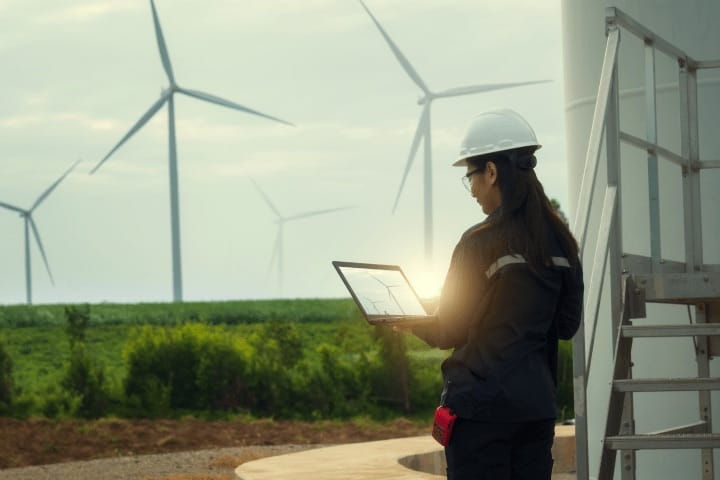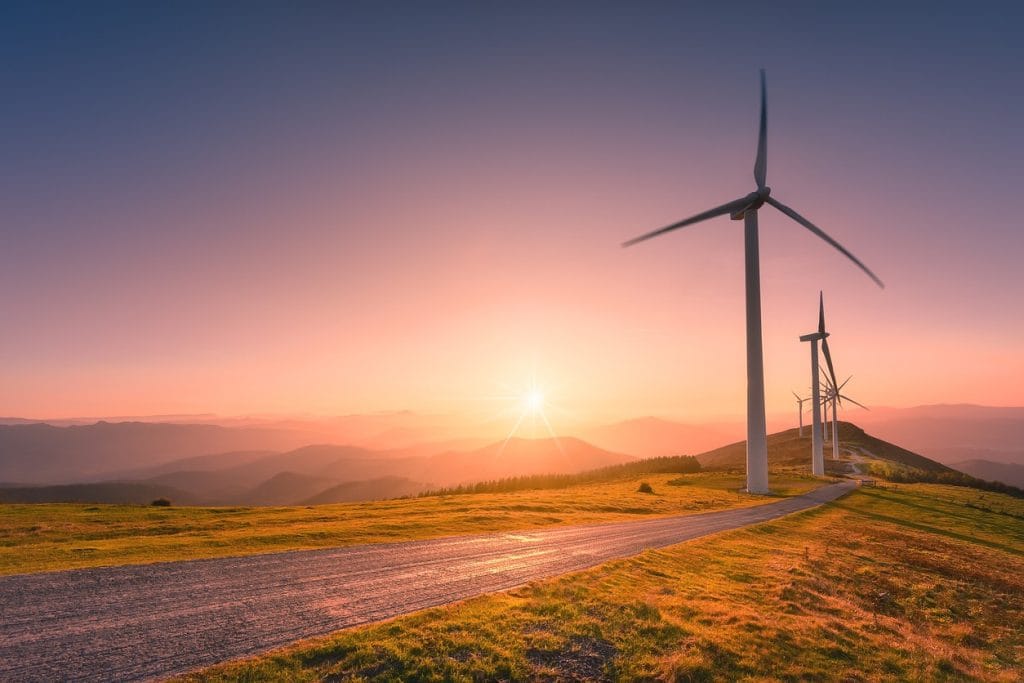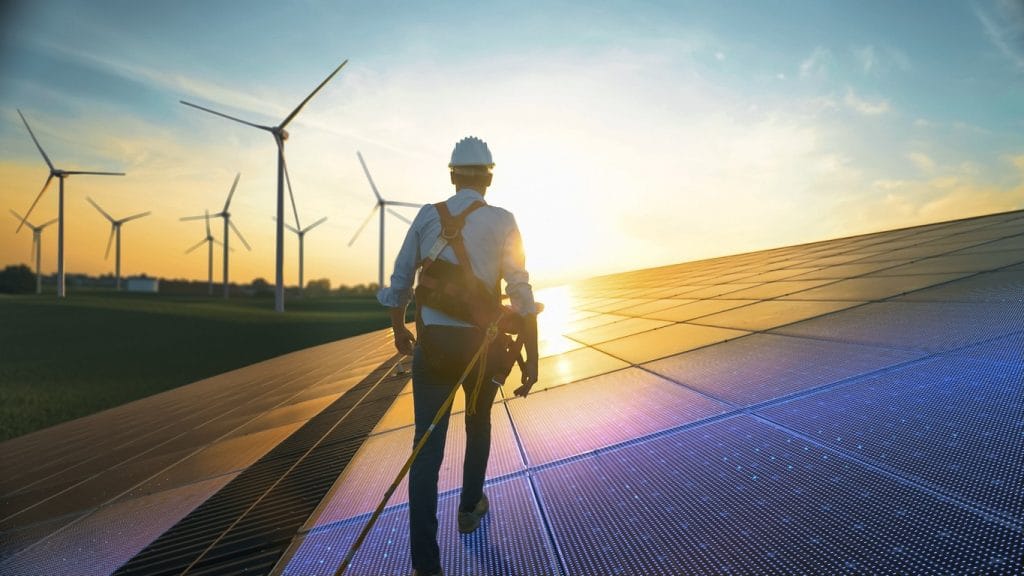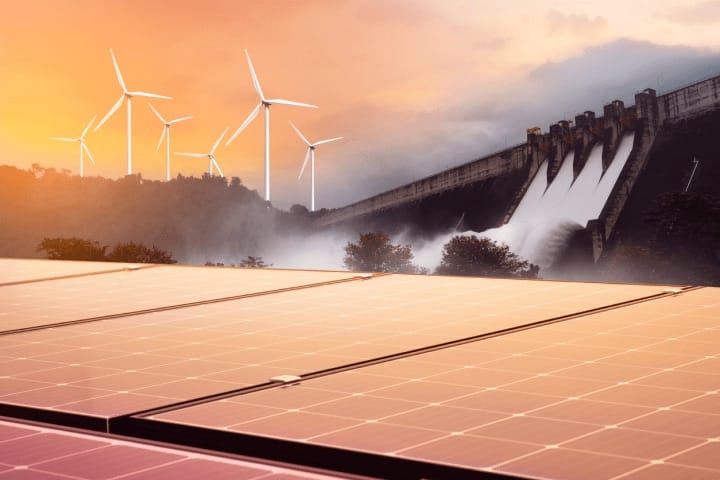
Bridging the gap: Tripling renewables by 2030
Tripling renewable energy capacity
COP28 in Dubai last December was a landmark moment for renewable energy. More than 130 national governments, including the EU, agreed to work to triple the world’s installed renewable energy capacity to at least 11,000 gigawatts (GW) by 2030.
However, the challenge is now definitely in the implementation. Last week, delegates concluded the most recent UN climate change conference in Bonn, Switzerland, without agreement on renewable energy commitments. The International Energy Agency (IEA) also recently published its report on the goal to triple global renewable energy by 2030, suggesting that most countries need to accelerate rapidly to meet their ambitions.
That’s why we wanted to explore the challenges and opportunities in reaching the ‘tripling of renewables’ target by 2030. We will also examine the critical role renewable energy markets and trading must play in encouraging more investment and adoption.
“COP28 in Dubai last December was a landmark moment for renewable energy”
Where we are now
In recent years, renewable energy capacity has made unprecedented progress. The IEA reported that in 2023, global renewable energy capacity additions surged to nearly 560 GW, reflecting a 64% increase compared to the previous year. China played a significant role in this growth, contributing almost 350 GW of the new capacity.
Based on current policies and plans, developed economies are projected to nearly double their renewable capacity by 2030, making up approximately 40% of the global target. That’s led by Europe contributing about one-fifth of this global increase. Emerging and developing economies, excluding China, are also set to double their capacity, with India leading the way. In Latin America, where renewables comprise over 60% of electricity generation, mainly due to hydropower, the cumulative national targets suggest a 1.3-fold increase in installed capacity by 2030. Brazil is expected to lead this growth, accounting for over half of the region’s total renewable energy ambitions.

Despite ambitious plans, only 14 of the 194 Nationally Determined Contributions (NDCs) include explicit targets for total renewable power capacity by 2030. NDCs are the official climate action plans countries set out every five years to show how they plan to cut emissions and adapt to climate impacts. The expectation is that many more countries will include renewables targets in their next NDC updates in 2025.
Tripling global renewable power capacity by 2030 is hugely ambitious. Still, we agree with the IEA that it is achievable if we can build on the current momentum, scale up the necessary investment flows, and improve planning and permitting processes. Countries learn from the progress that is being made in China and Europe. Outside of China, the rest of the world would need to accelerate average annual renewables growth by 36% over the remainder of the decade to meet their current policy plans. Although that’s a significant challenge, the acceleration we have seen since 2022 suggests it’s not beyond reach.
“Tripling global renewable power capacity by 2030 is hugely ambitious”
Following China and Europe’s lead
China’s renewables growth has been extraordinary.
In 2020, the Chinese government set a target to reach 1,200 gigawatts (GW) of renewable capacity by 2030. As of April 2024, China’s total installed wind and solar PV capacity is already at 1,130 GW. At its current pace, China could realise its 2030 ambition later this year.
It’s an extraordinary transformation from a country that still relies heavily on fossil fuels for energy. This transformation began in the mid-2000s when China faced severe environmental crises due to its coal dependence. Rising pollution levels and international pressure prompted a strategic shift towards renewable energy investments.
As China’s GDP growth slowed, the government recognised the need for cleaner, more sustainable energy. Since then, successive five-year plans have seen substantial investments in solar, wind, green hydrogen, and geothermal energy, alongside battery storage and supply chain advancements.
China’s ambitions to lead the renewable energy revolution haven’t matched its targets to cut carbon emissions until recent years—China still generates ~ 70% of its electricity from fossil fuels. However, President Xi told the UN in 2020 that the country would strive to “peak carbon dioxide emissions before 2030.” As with many other countries, China has also struggled to integrate renewables into the ageing national electricity grid infrastructure that relies on the reliability of non-intermittent sources.
China’s renewables growth is hugely impressive, but its success is also an outlier, given that it is supported by centralised governmental control. Yet, countries can also look to Europe’s renewables progress for inspiration. Renewable energy now makes up more than 40% of gross electricity consumption in the EU, and the expectation is that it will continue to increase to reach 61% by 2028, supported by a surge in new solar PV installations. Europe’s renewable energy growth has accelerated rapidly since Russia’s invasion of Ukraine became a turning point for the EU’s dependency on Russian gas.
A significant scaling up of investment in renewables and much-needed reforms to planning and permitting, particularly for wind energy projects, has demonstrated what’s possible for developed nations that may be struggling to accelerate their own renewable power capacity.
“Countries can also look to Europe’s renewables progress for inspiration”
Trading renewables
Europe is also leading the way in renewable power trading. Its highly interconnected grid has enabled cross-border power trading, improving the balancing of supply and demand across the continent and allowing the EU to continue to set ambitious renewable energy targets. We’ve already seen record monthly volumes this year for European power derivatives on the European Energy Exchange (EEX), Europe’s largest energy trading platform, driven in part by demand for renewables.
“We have seen more countries following Europe’s model for facilitating tradeable power markets, such as Japan; however, there is still enormous untapped potential globally”
Bridging the renewables gap and tripling capacity by 2030 means that the growth of renewable energy trading across more markets is vital. Large volumes of low-cost renewable energy create greater volatility in energy prices. The intermittency challenge leads to sharp price spikes, particularly during peak demand or unexpected weather conditions. This generates price risk management challenges for producers and consumers, which traders can help mitigate.
Traders are key players in managing the complexities of supply and demand, liquidity and price discovery in power and environmental markets. In power markets, they help warehouse risk and manage the daily balancing of power supply and demand in an industry where the energy cannot yet be stored in large volumes. We have seen more countries following Europe’s model for facilitating tradeable power markets, such as Japan; however, there is still enormous untapped potential globally.

Headwinds
Once renewable providers have increased certainty from efficient price discovery and risk management solutions, they can unlock the financial investment needed to grow the industry. Renewable power capacity can meet 2030 ambitions if countries adopt a well-defined policy framework, ambitious and legally binding targets, and a more pragmatic approach to permitting. Essentially, more countries should follow the EU’s and China’s lead.
Despite significant progress over the last decade, the US has found it challenging to accelerate its renewable energy capabilities despite significant investment and recent government support, such as the Inflation Reduction Act (IRA). Together, the US and Canada have announced plans to install nearly 1,000 GW of renewable capacity by 2030, which is only 13% of the global ambition. The dominance of fossil fuels in the US economy, a lack of consistent federal policies, ageing grid infrastructure and local opposition to new projects have all weighed on renewables progress.
Wind energy projects in the US have been hardest hit by planning opposition, while solar PV capacity is expanding. That picture is replicated across almost all global economies adapting to the clean energy transition. Although new wind installations reached a record 117 GW in 2023, most of that growth was in China. Wind energy projects in developed countries have been impacted by inflation, the rising cost of capital and continuing supply chain issues. Investors and developers have struggled to get new projects off the ground, off-shore wind auctions have closed without any bids in the UK, and businesses have been forced to seek government support in some countries. Despite this, wind energy is expected to surpass nuclear in terms of global electricity generation by 2025, but it needs to accelerate even more quickly. There is no tripling of renewable energy by 2030 without wind.
“Wind energy projects in developing countries have been impacted by inflation, the rising cost of capital and continuing supply chain issues”

Tailwinds
However, there is some potentially better news on the horizon. The EU launched The European Wind Power Action Plan in October last year to address some of the industry’s challenges, such as permitting, auction design and access to finance. Germany, the European leader in wind energy, will auction a record volume of 15 GW of new capacity this year. The energy company, Ørsted, made a final investment decision to build the largest offshore wind farm, Hornsea 3, in the North Sea at the end of 2023. At the start of the year, New Jersey approved two new wind farms to generate enough electricity to power more than 1.8 million homes, although they won’t come online until the end of the decade or after 2030.
Wind is hugely important as renewables penetrate deeper into energy markets. Turbines generate cheap electricity, and they often ramp up at night when solar power is unavailable. We can see this synergy in Texas—the most advanced renewables economy in the US—where wind and solar power complement each other to mitigate some of the intermittency challenges of each in isolation. One day in February of this year, more than 70% of the energy for Texans came from wind and solar energy combined.
Developing nations
Bridging the renewables gap by 2030 also means supporting developing nations with their renewable energy targets.
Current plans indicate India is leading renewable capacity ambitions in the Asia-Pacific region, excluding China. It is aiming to meet the majority of its growing electricity demand with renewable energy and achieve 500 GW of non-fossil fuel capacity (including nuclear) by 2030, which translates into about 485 GW of renewables.
By contrast, the IEA says that less than $40bn of a total $110bn energy investment in Africa this year is expected to go towards clean energy, putting it well off track to meet its decarbonisation goals. The organisation estimates that achieving Africa’s energy- and climate-related goals by 2030 will require annual investments of over $200bn through the end of this decade. Many parts of the continent have abundant renewable energy resources. A wealth of sun, wind and water means that with sufficient investment and support, African countries should be able to accelerate their renewables capacity towards 2030.
Encouraging greater expansion of wind and solar PV projects should also be a priority across the continent, as some countries currently rely on a small number of hydropower installations to meet their renewables goals. For instance, a single hydropower project in Angola is responsible for nearly 90% of the country’s total renewable energy expansion over the forecast period, while two projects in Ethiopia contribute nearly 85% and Tanzania’s renewable energy market expansion over the next five years is 80% dependant on hydropower.

Rewiring the world
The transition to renewable energy is not just about meeting climate goals; it’s about reshaping the entire energy landscape. Renewable energy trading’s role in this transformation is vital. Embracing innovative trading strategies, investing in storage solutions, and leveraging advanced data analytics will be crucial for bridging the renewables gap.
Europe’s leadership in renewable energy trading and China’s rapid renewable power development provide valuable lessons and opportunities for other regions. The challenge to triple renewables by 2030 will require a huge, coordinated effort from all countries and stakeholders, including traders, policymakers, and technology providers, to create resilient and efficient energy markets that meet the world’s growing clean energy demands. Fundamentally, if we want to accelerate the fourth industrial revolution and decarbonise the world’s energy, we need to rewire global electricity systems. That means working together and spending the money to make it happen.
